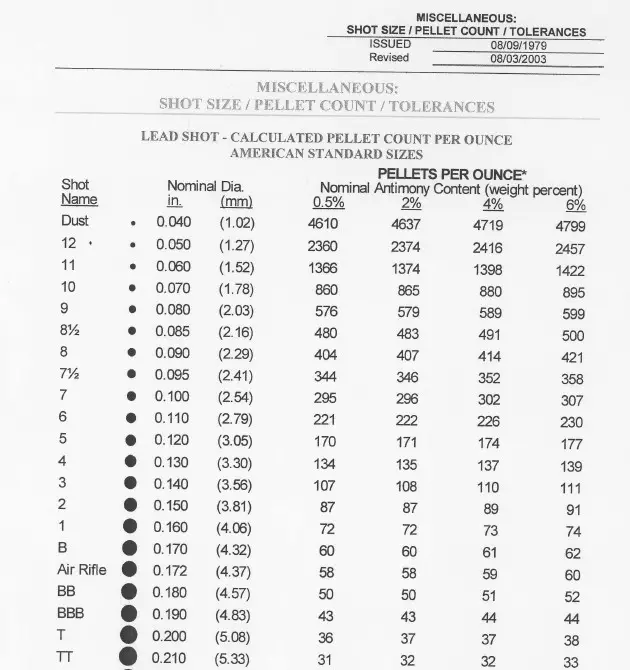Winchester Rooster XR: The 70 Yard Pheasant Load?
Although I do generally hunt wild pheasants with 20 gauges, this year that is going to change. There are two reasons for this: the Fabarm USA L4S autoloader, finally a 6-3/4 lb. autoloader that handles like a British game gun. The second reason is this load in 1-1/4 oz., 1300 fps, #4 shot configuration.
Those that shoot pen-raised birds on “preserves” or hunt in well-wooded areas will likely not understand this. Number 4 lead launched at 1300 fps retains the highly desirable 1.75 inches of penetration to about 70 yards. By contrast, #6 steel has 1.75 inches of penetration to just 9.2 yards, lead #6 shot to 43.4 yards.
The longest shot I ever took was several years ago with a 3 inch Browning Gold, 1-7/8 oz. buffered #4 lead, and a turkey choke. It was a miserably cold day in wind-swept, bleak barren fields of January. My friend, Dave Metcalf, and my Dad's indomitable Brittany were along for the frigid adventure. We didn't expect to see much, if anything at all and the snow was above knee-level.
Suddenly, I caught a flash of a rooster running across the ice, comical in itself, then disappearing into a brush-pile. It was a very long ways away, and that rooster could have walked out the other side of that large pile of brush, slowly and quite safely. He also could have hit the air, flying directly way, and even if seen to shot would be available. But, he didn't. That rooster launched himself straight up vertically in the air. Dave was closer, I called “Shoot!,” but Dave didn't bring his gun up. I emptied my gun into that rooster, firing three time, and each shot was a hit . . . buffeting him upon impact. The rooster dropped with a loud thud, stone dead. Although Dave enjoyed telling my Dad that I was crazy (he already knew that) and that I whacked that rooster at 120 yards, it wasn't nearly that far. It was past 90 yards, though, and I've never so much as fired at a rooster at that range again. This was unusual, for the bird was broadside with the length of the vitals fully expose, and I had the right shell and choke for it.
Fifty yards with 1-1/4 oz. of buffered #5 lead out of a twenty gauge has never been a problem, but 60 yards requires tungsten loads to maintain adequate density. Sure, #4 lead is more lethal at all ranges than #5, but the pellet count isn't there and 1-7/8 oz. loads inhibit quick follow-up shots in light guns. That all 12 gauge territory, for the heaviest lead load for the 20 gauge currently in production is 1-3/8 oz. of #5 by Hornady.

Above are the published SAAMI specifications last revised in 2003. The typical pellet count for 3% antimony lead #4 shot is 169 pellets, however 179 pellets actually hit the 48 x 42 inch target. Winchester seems to using slightly smaller diameter shot than typical #4, although you can add a pellet or two for 4% antimony shot. The difference according to SAAMI, from 2% - 4% antimony, for #4 lead shot is two pellets per ounce.
The cheap or “chilled” shot is about 2% antimony content. In order to keep small pellets spherical, you need about 6% antimony where is what all of the better competition target loads have. The larger the pellet size, the less antimony you need. For #4 or #5 shot, 4% antimony is ideal, as used by Remington and others in their premium lead hunting loads.
Trulock published choke standards are:
Lead Shot Choke Chart
Constriction
Percent
Cylinder
.000
40 at 40 yds- 70 at 25 yds
Skeet 1
.005
45 at 40 yds- 75 at 25 yds
Imp Cyl
.010
50 at 40 yds
Skeet 2 (lite mod)
0.15
55 at 40 yds
Modified 0.20
60 at 40 yds
Imp Mod
.025
65 at 40 yds
Full
.030
70 at 40 yds
Extra Full
.040
73 at 40 yds
Turkey
.045 Plus
75 PLUS at 40 yds
Winchester has changed the rules with their Rooster XR load, though, for with the Fabarm L4S it has already printed patterns at over 84% efficiency, with a “Modified” choke. The old “Full Choke Performance” threshold has been shattered quite handily and amazingly. B & P MB Long Range nickel-plated #4 loads patterned at 60% or so out of the very same shotgun, same choke, same day, and the Winchester Rooster XR loads put over 50% more pellets where they belong. It is a quite significant improvement.
The vital area presentation of a wild pheasant varies from a relatively small pheasant rear, to flaring shots with most of the torso exposed. Number four lead is lethal well past 70 yards, it is up to us to consider the kill zone of each individual wild pheasant scenario and ensure that our pattern density is appropriate for the available target area.
Winchester begins with an 85% pattern perecentage out of a “Modified” choke. That alone should raise eyebrows, for 70% is “Full Choke.” A 55 % pattern from this 180 pellet load is about 99 pellets. You need roughly 100 pellets in a 30 inch circle for a viable pheasant load. As long as you can put 100 – 110 #4 pellets in a 30 inch circle as confirmed by your personal pattern testing, that is one-shot dead in the air range for your shotgun with #4 lead.
I trust that my readers will use their new Rooster XR super-powers for good, never for evil. Winchester Rooster XR #4 is the most impressive lead pheasant load I've ever tested.
Copyright 2015 by Randy Wakeman. All Rights Reserved.












